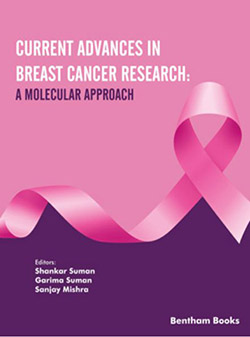Abstract
Calcium (Ca2+) signaling plays an important role in every aspect of cellular physiology, including cell proliferation, cell death, and cell motility. In the cellular environment, calcium signaling is tightly regulated to achieve a specific cellular response. Dysregulation in cell proliferation and cell death are crucial events in cancer evolution. There are several reports which have established the central role of calcium signaling in acquiring the hallmarks of cancer. Calcium signaling has been shown to be linked with several proteins and pathways, which are involved in the progression and advancement of breast cancer, including RANK/RANKL signaling pathway, EGFR and CAMK signaling, Rap2B, ERK1/2 signaling, Ca2+ influx pathways, MCU proteins, PTHrP, calmodulin, PARP1, NFAT, calpain, mitogen-activated protein kinase (MAPK), calmodulin-dependent protein kinase II (CaMKII), epithelial-mesenchymal transition (EMT), phospholipase C (PLC), inositol 1,4,5-trisphosphate (IP3), vascular endothelial growth factor (VEGF), estrogen, and estrogen receptor. In the recent past, several studies presented good enough pieces of evidence suggesting Ca2+ channels and transporters as a potential therapeutic target of breast cancer treatment. Therefore, in light of previous knowledge, in this chapter, we will discuss the role of Ca2+ signaling in breast cancer and its therapeutic implication as to the current perspective of breast cancer treatment.
Keywords: Breast cancer, Ca2+ homeostasis, Ca2+ channels, Cancer therapy, Ca2+ channel blockers, Mammary gland, ORAI, PMCA, Store-operated Ca2+ entry, TRP.






















